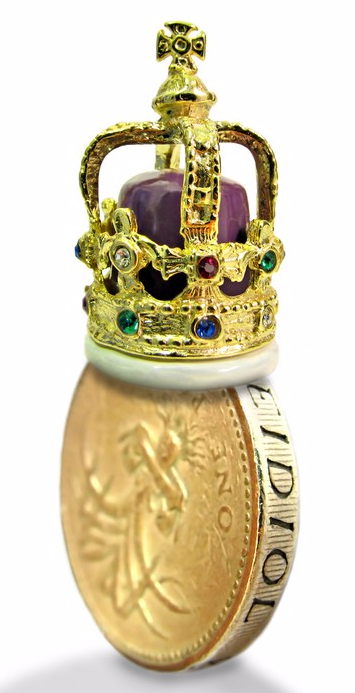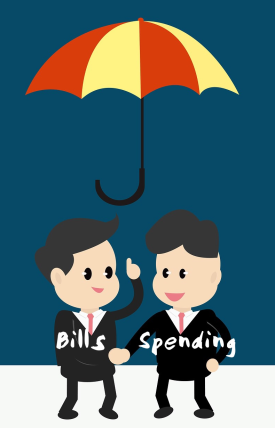Loss, Pain, Fear – these are our friends when it comes to controlling our spending, if we can learn how to use these emotions to our advantage. When we spend cash, researchers have found that we experience not only a sense of loss but also physical pain. But it’s not the same when we use cards, as the experience is almost “frictionless”. That’s why Cash is the undisputed King when it comes to controlling our spending. Cash is gradually losing out to Debit Cards, but it still accounts for almost half of all spending in supermarkets. If you don’t do this already, then I challenge you to try using cash for your next weekly supermarket shop. It will save you money. Switching to cash typically reduces the amount people spend by about 10%.

Make a Friend of your Fear
Are you reluctant to try? That’s probably because you’re worried that you might not have enough cash to pay the bill when you get to the checkout. And if we dig a little deeper, it’s really the fear of being embarrassed in public. This is classic Type 1 (fast) thinking – while you were reading my challenge, you probably started to imagine yourself at your local supermarket checkout with not enough money to pay and immediately decided that you didn’t want to take that risk. So now you need to slow down, engage brain, and do some Type 2 (slow) thinking – you might change your mind.
You know how much you can afford to spend at the supermarket. If you spend too much this week, then you won’t have enough left to last for the rest of the month. So when you stop to think about it, wouldn’t that be a bigger problem than the momentary embarrassment and inconvenience of having to put back a few items at the checkout?
Once you’ve made the decision to use cash, then Fear becomes your friend and works FOR you – it’ll help you ensure that you DO have enough cash at the checkout – by shopping more carefully and carrying a little extra cash, just in case. And in bigger supermarkets you can now eliminate the risk of embarrassment by doing your own checkout, so it’s easy to stop when you reach your limit. In some stores you can scan things yourself using a hand-held scanner as you put them in your trolley.
Using a Cash and Card Combo
But in a digital world we can’t use cash for everything. We’re spending more and more online, with Amazon, EBay etc., and for that we typically need to use a card. So in reality you’re almost certainly going to be using a combination of cash and Debit Card for your spending. It will make managing your spending a lot easier if you use only one Debit Card linked to your Spending Account (see previous post). And the combination of debit card and bank account should feel as much like using cash as possible:
How much have I got left? With cash you can see what you’ve got left, every time you spend – you can even feel the thickness of your “wodge”! With a Debit Card, you’ll need to check the account balance online – so you need a good app on your phone that’s easy to use, and text alerts can be useful too.
When it’s gone, it’s gone. A bank account with no overdraft will feel more like cash, as you can only spend what you have left in the account. Overdrafts are an expensive way to borrow, so your bank may be quite happy to let you go overdrawn from time to time – or even all the time. But you might be better off in the long run with an account that simply doesn’t let this happen.
It’s worth considering a Prepaid Debit Card. These can be used just like other payment cards, but you can only spend what you’ve loaded on to the card account. They are also used as a modern way of giving pocket money to kids, and if they work for kids then they should work well for “lazy thinking” grown-ups too. I recently switched to a Prepaid Credit Card which I now use for all my non-cash spending, and in my next post I’ll tell you how that’s working out.


